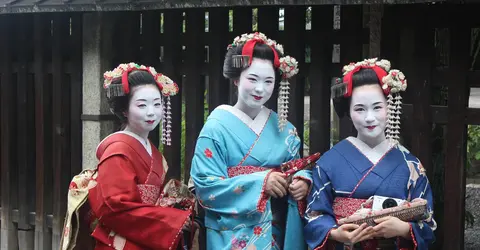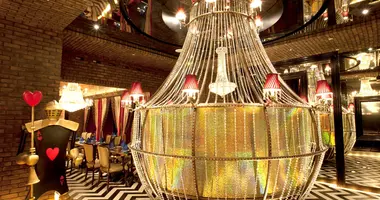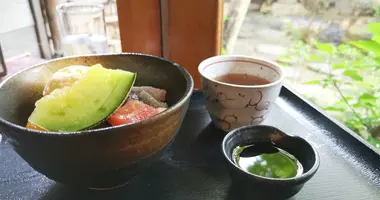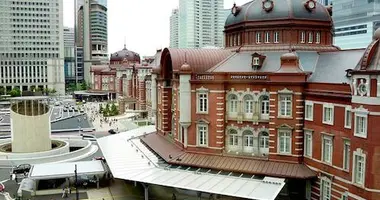Where to see geishas in Tokyo
- Published on : 20/04/2018
- by : M.H.
- Youtube

A geisha show
pixabay
Discretion in the capital
Tokyo, a bustling metropolis, hides treasures of tradition, including the enigmatic geishas. These refined artists, guardians of an ancestral art, fascinate visitors from all over the world. Although less numerous than in Kyoto, it's still possible to catch a glimpse of them in the Japanese capital. Let's discover the districts, events and establishments where you're most likely to come across these icons of Japanese culture. Get ready to plunge into a world of mystery and elegance, where every encounter promises to be unforgettable.
See geishas in Tokyo's traditional districts
Tokyo is home to several hanamachi, or "flower districts", where geishas live and work. These traditional enclaves offer the best opportunities to catch a glimpse of these artists in their element. Among the most famous are Shinbashi, Yoshicho, Hachioji, Mukojima, Kagurazaka and Asakusa. These districts retain a more traditional atmosphere than the rest of the capital, with their narrow streets and centuries-old teahouses.
The Kagurazaka district, near Iidabashi station, is particularly recommended. Formerly one of Tokyo's most important geisha districts, it has preserved its old-world charm. At dusk, you may be lucky enough to catch a glimpse of geishas on their way to appointments. Even if you don't, a stroll through the cobbled streets will immerse you in the atmosphere of old Tokyo.
Asakusa, famous for its Senso-ji temple, is also home to a geisha community. Although fewer in number than in the past, they continue to practice their art in this historic district. A stroll through the streets adjacent to the temple may be in store for you.
Geisha events and shows
For those wishing to admire the art of the geisha up close, a number of events and shows are organized in Tokyo. These performances offer a unique opportunity to discover their artistic talents in a more accessible setting.
The Asakusa Tourist and Cultural Center offers free performances of traditional dance and music interpreted by geishas. These performances take place on the 6th floor of the building, usually on Saturdays. Tickets are distributed on the first floor in the morning, but be warned: places are limited to around 100 people, so arrive early.
In Nihonbashi, the Omotenashi Nihonbashi information center organizes hour-long performances featuring geisha shamisen playing and traditional dances. These performances take place on the first four Saturdays of the month, from 6pm to 7pm. It's a great opportunity to take part in traditional games with the geishas and enjoy an immersive experience.
Also keep an eye on the local festival calendar, or matsuri. These events sometimes offer the opportunity to see geishas taking part in parades or traditional ceremonies.

You can meet geishas on the street
pixabay
Establishments offering encounters with geishas
For a more intimate, personalized experience, some establishments in Tokyo offer geisha encounters. These opportunities allow you to interact directly with these artists and learn more about their art and way of life.
Ochaya, or traditional teahouses, are the preferred places where geishas practice their art. Although often reserved for regular customers, some are open to tourists through specialized agencies or high-end hotels. These experiences can include dinner, artistic performances and conversations with the geishas.
A number of ryôtei, high-end traditional restaurants, also offer evenings in the company of geishas. These establishments offer a total immersion in Japanese culture, combining refined gastronomy with traditional entertainment.
For those who prefer a more modern approach, some specialized travel agencies organize encounters with geishas in more contemporary settings. These experiences can include introductory workshops in traditional arts, such as the tea ceremony or flower arranging, guided by a geisha.
Etiquette when meeting a geisha
Meeting a geisha is a privileged moment that requires the observance of certain rules of etiquette. Understanding and following these codes is essential to fully appreciate the experience and show respect for this age-old tradition.
First of all, it's crucial not to confuse geishas with tourist curiosities. If you spot one on the street, resist the urge to chase them or shoot them. They're often on their way to a business meeting and appreciate discretion.
At an organized meeting, let the geisha guide the interaction. Avoid questions that are too personal or intrusive. The art of conversation is an important part of their training, so let them lead the discussion.
Respect for personal space is paramount. Never touch a geisha without her explicit consent, even for a photo. Their appearance, including their hairstyle and kimono, is the result of long preparation.
Finally, if you're lucky enough to attend a performance or dinner, be punctual and dress appropriately. Casual dress is generally to be avoided in these formal contexts.
Alternatives to the geisha experience in Tokyo
If meeting a real geisha proves difficult, Tokyo offers several alternatives for immersing yourself in this fascinating world. These experiences allow you to appreciate geisha culture from a different angle.
A popular option is to take part in a maiko (apprentice geisha) transformation session. Several studios in Tokyo offer these experiences, where you'll be made up, coiffed and dressed as a traditional maiko. It's a fun and educational way to understand the art and rigor behind a geisha's appearance.
For those interested in the artistic side of things, introductory workshops in traditional arts are available. You can learn the basics of tea ceremony, flower arranging (ikebana) or even try your hand at playing the shamisen. These activities offer a glimpse into the skills that geishas master.
Tokyo's museums of history and culture, such as the Edo-Tokyo Museum, often feature exhibitions on the history of geisha and their place in Japanese society. These visits can enrich your understanding of this tradition.
The difference between seeing geisha in Tokyo and Kyoto
Although both Tokyo and Kyoto offer the opportunity to see geishas, the experience can be quite different between these two cities. Understanding these differences can help you adjust your expectations and choose the destination that best suits your interests.
In Kyoto, considered the cradle of geisha culture, tradition is more visible and rooted in the urban landscape. The Gion and Pontocho districts are famous for their geishas, and it's more common to spot them in the streets. The city has also preserved many machiya, traditional wooden houses, creating a more authentic atmosphere.
Tokyo, on the other hand, offers a more modern, urban experience of geisha culture. Geisha districts are less concentrated and more scattered throughout the city. The atmosphere is generally more dynamic, reflecting the capital's unique blend of tradition and modernity.
In terms of numbers, Kyoto has more active geisha than Tokyo. This means that the chances of seeing them are statistically higher in Kyoto. However, Tokyo often offers more accessible experiences for tourists, with shows and meetings organized more frequently.
The history and role of geisha in Japanese culture
Geishas occupy a unique place in Japanese history and culture, embodying a fascinating blend of tradition, art and refinement. Their origins date back to the 18th century, when Japan enjoyed a period of peace and prosperity under the Tokugawa shogunate.
Initially, the term "geisha" referred to male performers who entertained customers in pleasure districts. It was only later that women began to perform this role, rapidly becoming more popular than their male counterparts. Over time, geishas distinguished themselves from courtesans and prostitutes, focusing on the arts of entertainment rather than sexual services.
The role of geisha in Japanese society has evolved over the centuries. They became guardians of traditional culture, mastering and preserving arts such as classical dance, music, poetry and the tea ceremony. Their presence was (and remains) synonymous with refinement and luxury.
Today, although their numbers have dwindled considerably, geishas continue to play an important role in the preservation and transmission of traditional Japanese culture. They are considered living treasures, embodying a unique and precious aspect of Japan's cultural heritage.
Their influence extends beyond the traditional arts, touching on fashion, aesthetics and even Japan's cultural diplomacy. Geishas continue to fascinate Japanese and foreign visitors alike, serving as a bridge between the past and present of Japanese culture.




























